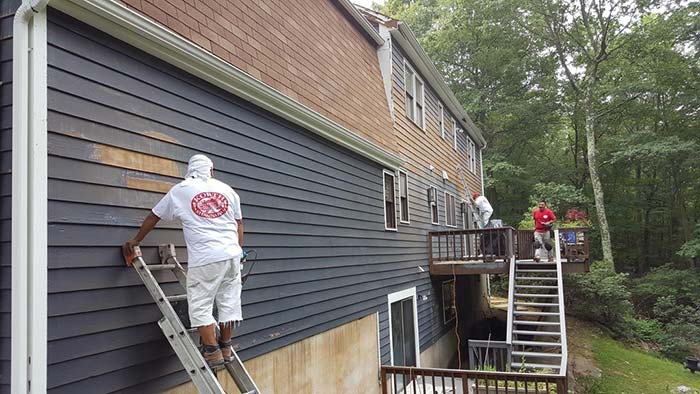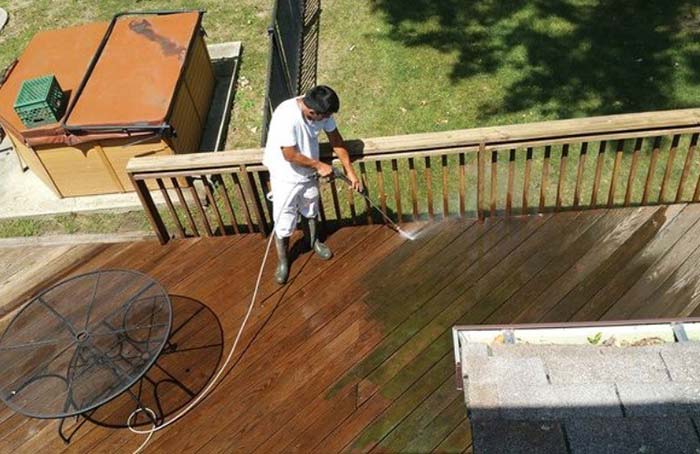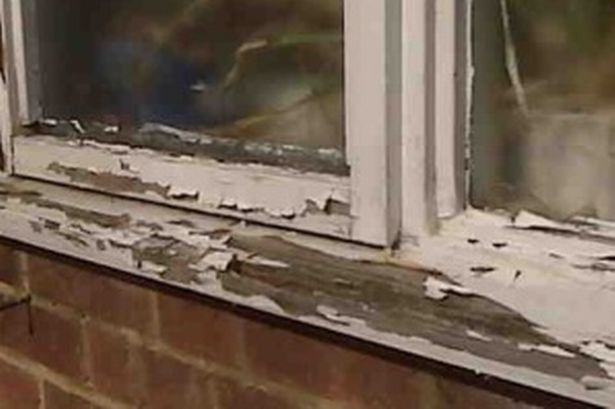8 Places to Check Your Home for Winter Damage

Winter, along with the cold and snow that it brings can do some serious damage to a home’s exterior. There are several very common places to check your home for winter damage, including damage done to roofs, foundations, and windows.
1. Roof
Ice dams and winter storms can do a lot of damage to your roof. An ice dam occurs when snow on the roof melts, runs to the edge, and refreezes there, forcing water back up under the roof where it can cause leaks and shingle deterioration. At the same time, high winds, hail, and winter storms can tear off shingles or drive moisture beneath them, causing further damage. If you’ve found leaks in your roof, you’ll need to repair them to help prevent damage to your home’s interior and a complete roof replacement.

2. Gutters
Ice dams can do damage not only to your roof but to gutters as well. That’s because the heavy ice building up on the edge can pull gutters away from the roofline. At the same time, water freezing inside the gutters and downspouts themselves can lead to separations in some areas, which means that they’ll need to be replaced.
3. House Exterior
Cold, snow, and hailstones can also take a toll on the outside of a house. This can result in peeling paint, which if left long enough, could mean that your siding can become susceptible to moisture, which in turn can lead to wood rot and future repairs. Repainting your exterior in the spring can help prevent these problems.

4. Siding
If the paint has peeled enough on the siding of the house, moisture can cause the wood to begin rotting. In addition, hailstones or fallen tree limbs can damage siding, whether denting aluminum siding or cracking vinyl. Because the siding is a home’s first line of defense against the elements, it needs to be repaired in a timely way.
5. Wood Decking
When moisture sits on your deck it can begin to infiltrate, causing the wood to rot. Sealing your deck is the first line of defense against the elements. If the sealing fails, the wood likely needs to be replaced. Walk the deck to check for soft spots, especially around the ledger board, where the deck connects to the house. Also, be on the lookout for popped fasteners, which will need to be screwed back in. And if the deck is covered in mildew, give it a thorough cleaning with a pressure washer.

6. The Foundation
The same freeze/thaw cycle that causes cracks and potholes in a driveway can also affect a foundation. Hairline cracks in the concrete of a foundation that develops naturally over time because of a home settling can expand during the winter months, causing major structural issues if they aren’t taken care of in a timely manner.
7. Windows
Fluctuations in winter temperature cause caulk to pull away from windows, which in turn creates drafts that let warm air out and cold air in. If you notice that your home is particularly drafty, check your windows, you may need to reapply caulk to any cracks. If there is any peeling you may also want to consider repainting the trim on your home.

8. Doors
Your doors keep out the worst of winter, but when exposed to wintry conditions the frames around your doors can grow soft and damp, potentially leading to wood rot and an invitation to termites in the springtime. As temperatures warm and spring arrives, check each of your door frames. If the damaged area is extensive, consider replacing the entire door frame.
